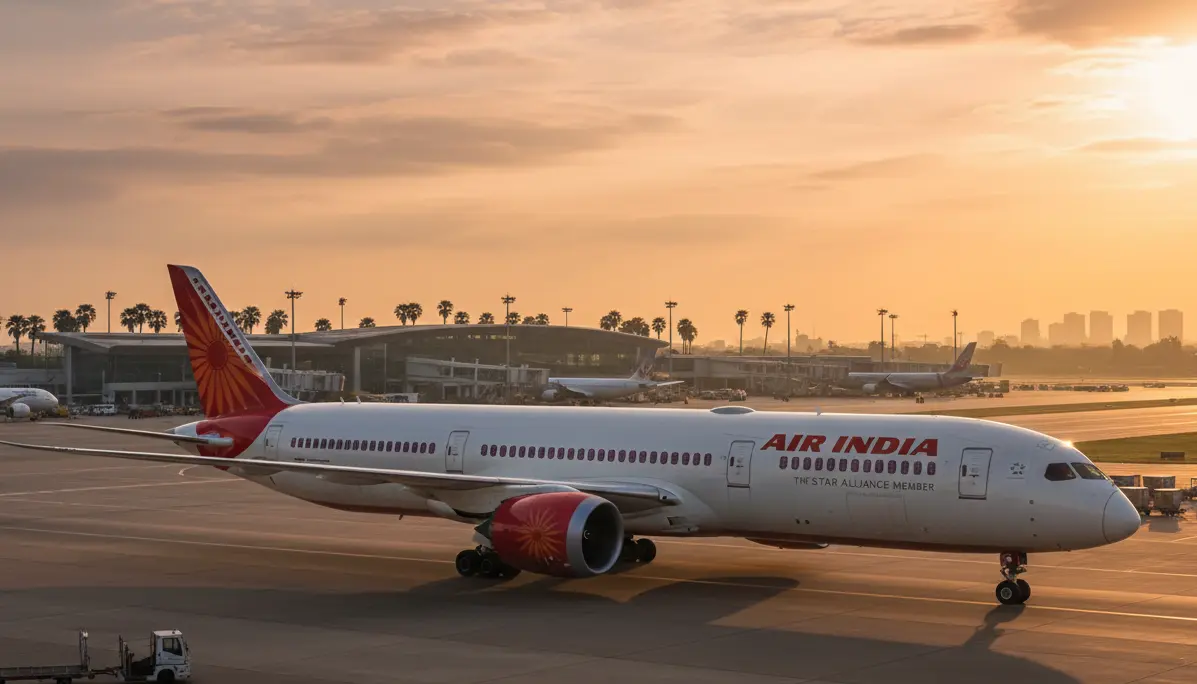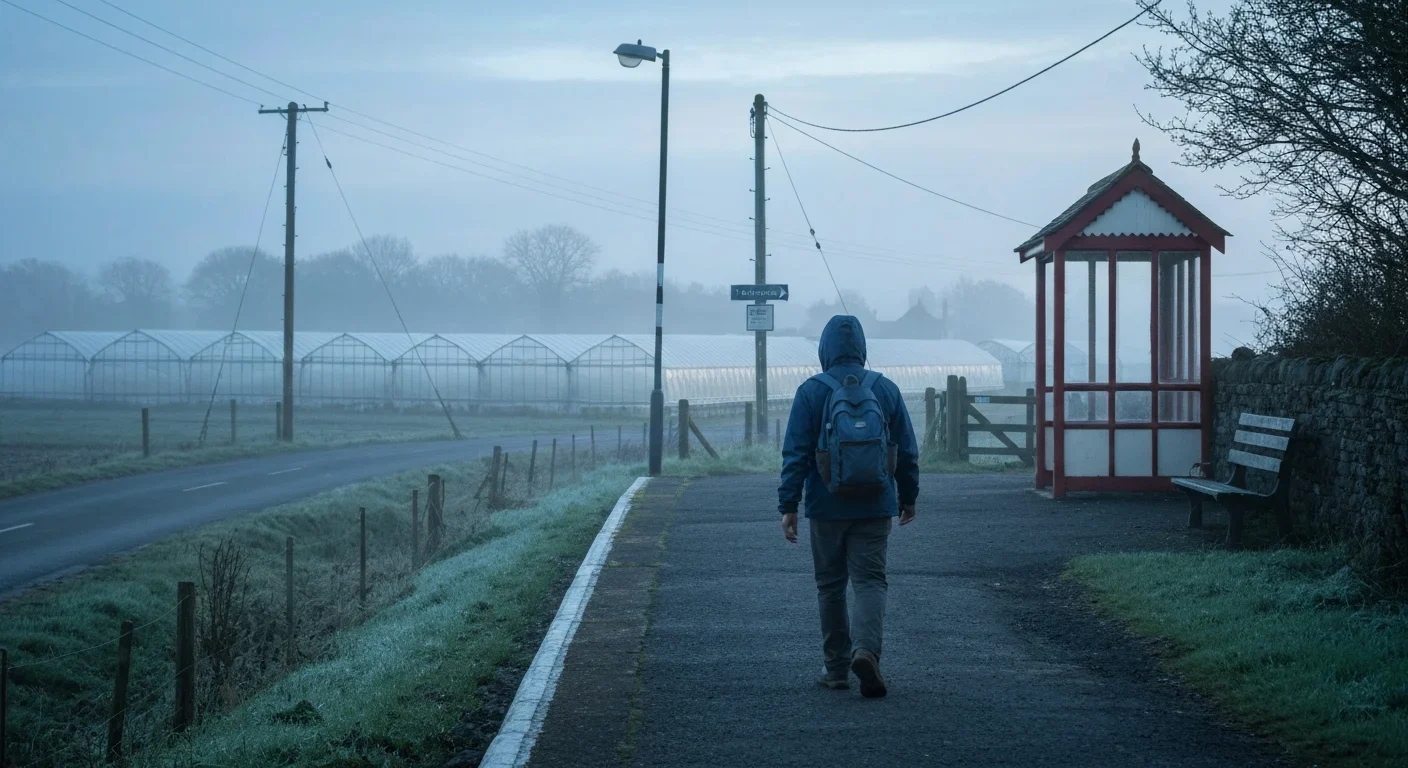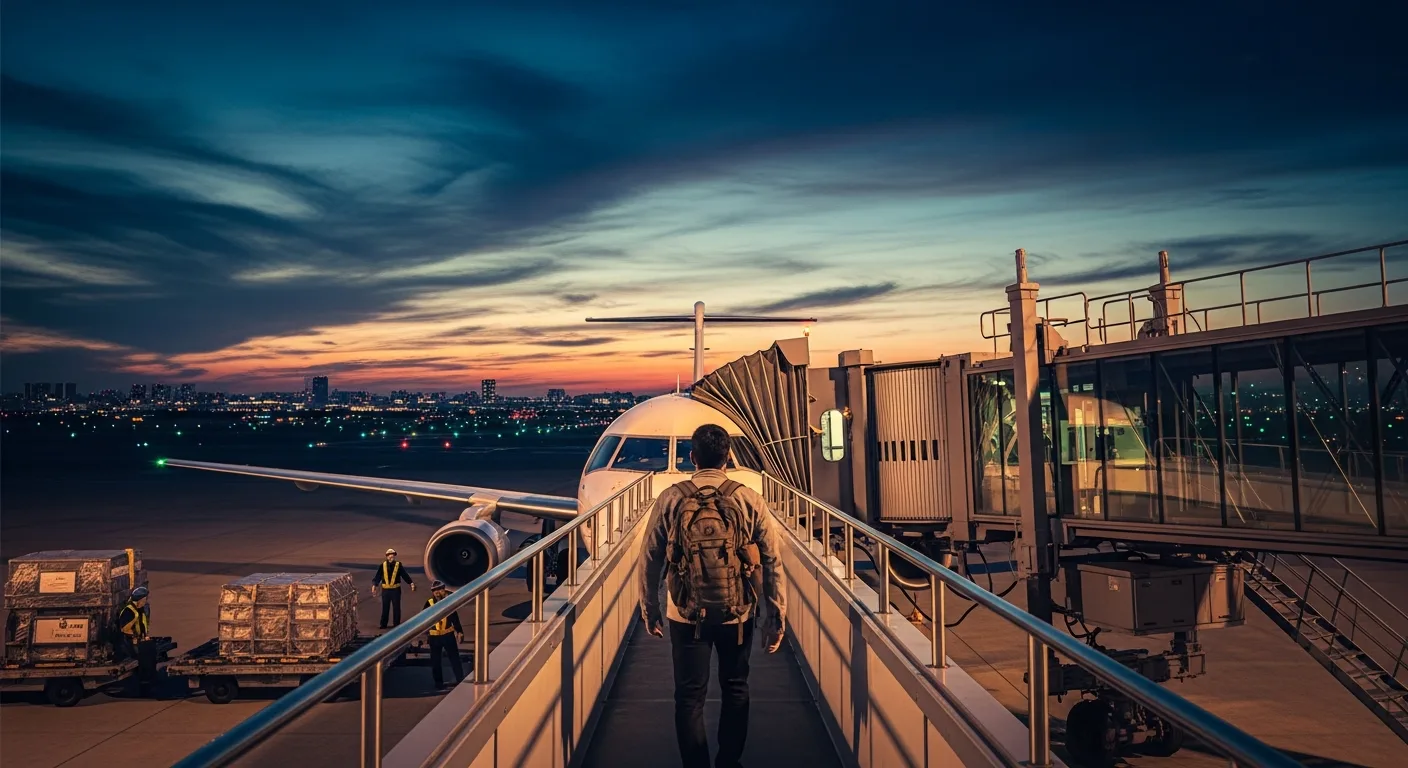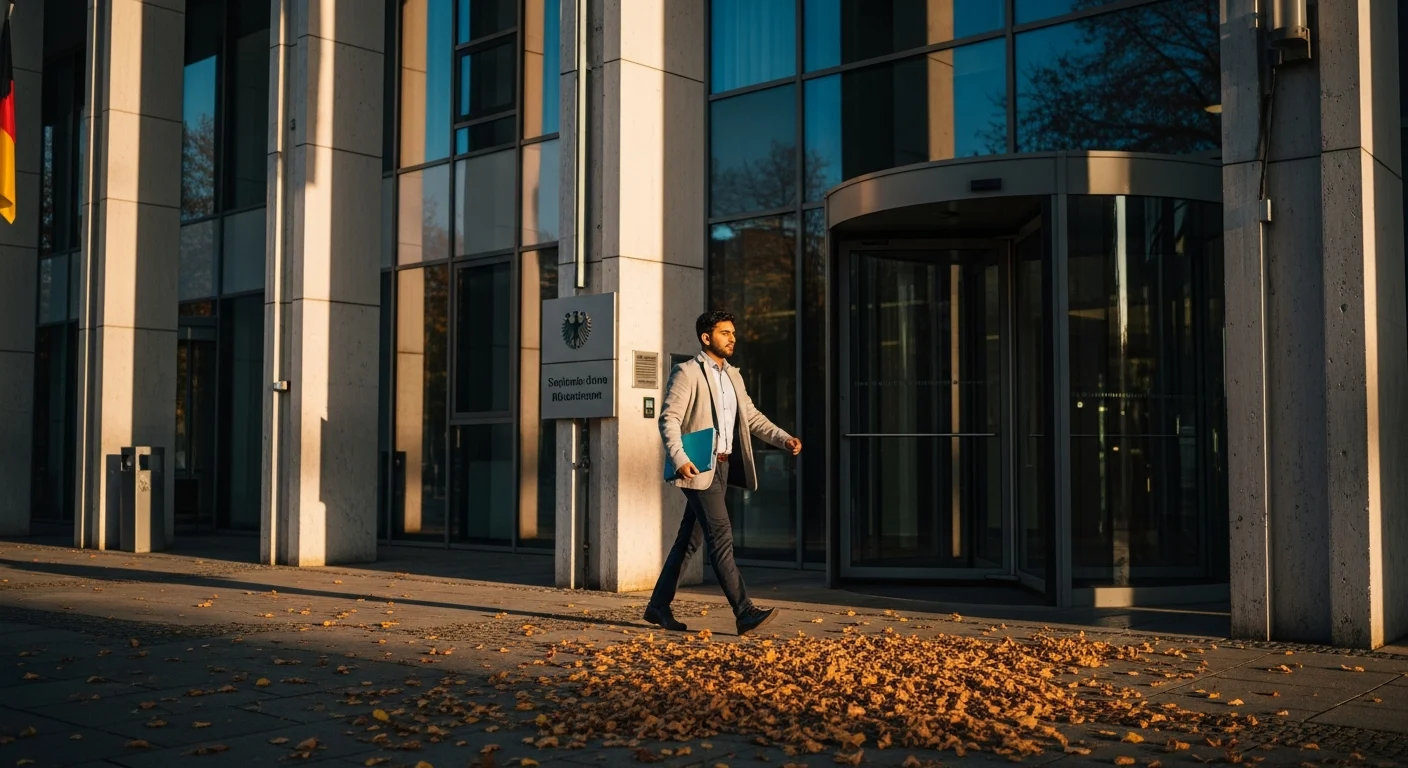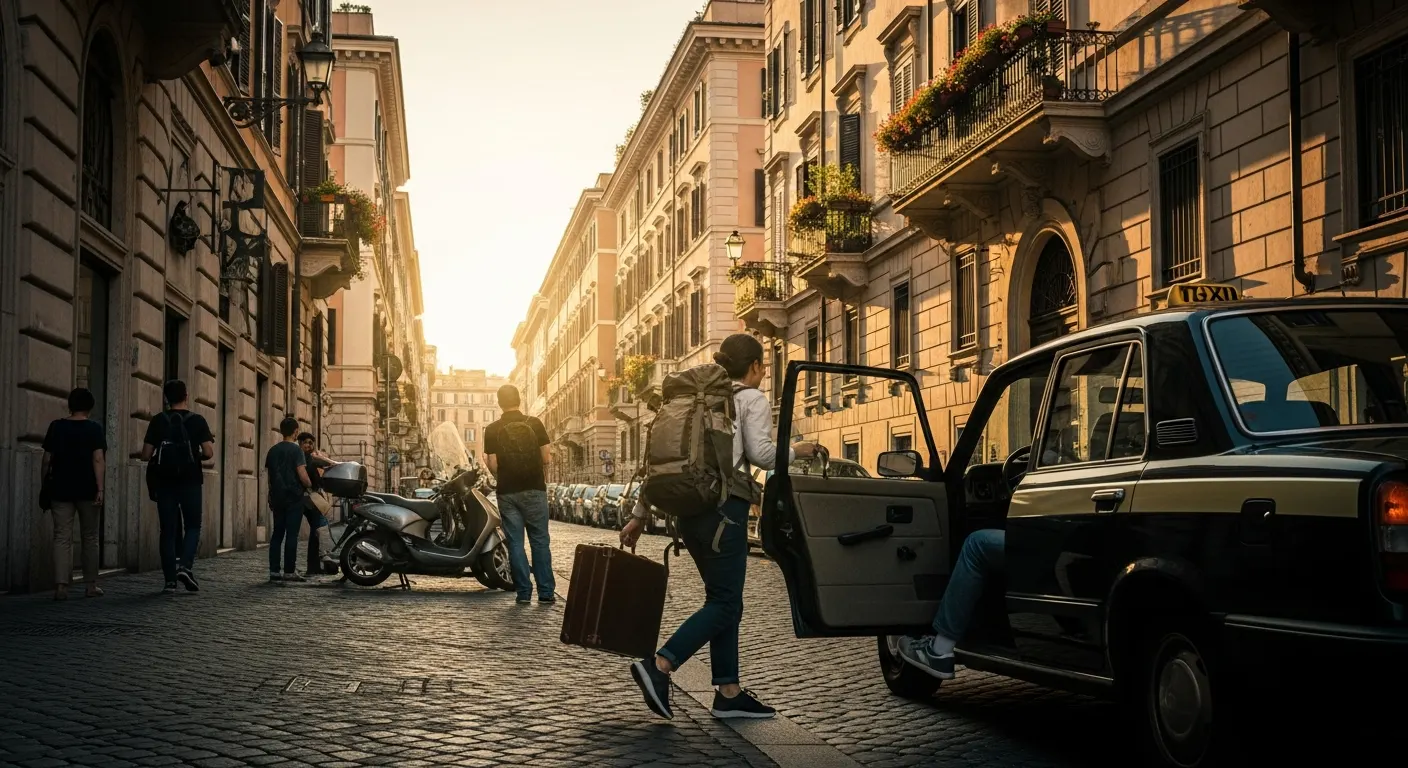Is Dummy Ticket For Thailand Tourist Visa Accepted?
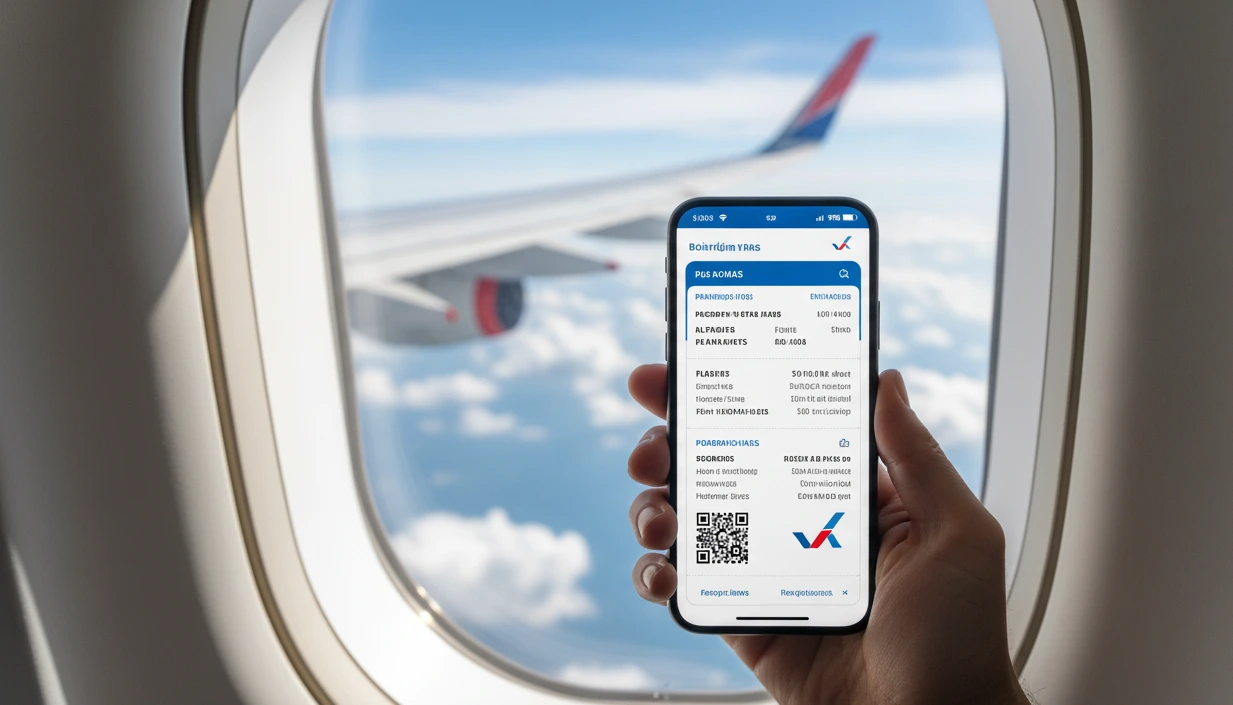
Thailand Tourist Visa Guide: When Dummy Tickets Are Accepted
Your Thailand plan is set in your head. Maybe it is Phuket with friends, Bangkok shopping with family, or a solo Koh Samui break from work in India. Then the visa checklist hits you, and one question refuses to go away: Will a dummy ticket actually work for a Thailand tourist visa, or will someone insist on a fully paid return? That doubt is not trivial, because three different people can ask for your ticket: the Thai embassy or consulate when you apply, the airline staff at check-in in India, and Thai immigration when you land. For more insights on visa preparations, check our FAQ or explore blogs for tips from fellow travelers.
In this guide, we walk you through how each of them looks at onward travel, where dummy tickets usually pass without drama, and when you are safer paying for a real, flexible ticket. If your appointment is coming up soon, book a dummy ticket today and walk in with complete documents. Learn about our team's expertise on the About Us page to see why thousands trust us for reliable bookings.
dummy ticket for Thailand tourist visa is one of the most useful documents travelers prepare when organizing international trips. While most countries do not ask you to buy a fully paid ticket upfront, they do expect a verifiable proof of travel intent that clearly shows your entry and exit plan. This helps demonstrate that you will follow your schedule and return on time.
Using a professionally issued and verifiable dummy ticket for Thailand tourist visa is the safest and most convenient way to satisfy this requirement without financial risk, especially for visa applications and immigration preparations.
Last updated: November 2025 — verified against the latest traveler documentation practices and global consular guidelines.
How Much Can You Trust A Dummy Ticket For Thailand?

Before you decide on anything, you need clarity on one thing. “Accepted” does not always mean “guaranteed,” especially when three different authorities can look at your ticket.
Let us walk through how they actually think, so you know where a dummy ticket usually works for Indians and where it can turn into a stressful conversation at the counter. Give your visa file a professional touch with an instantly delivered dummy ticket booking that comes with a verifiable PNR.
Accepted In Real Life Vs Guaranteed On Paper
When you read Thai visa rules, you often see a simple line about “confirmed return or onward travel.”
On paper, that sounds like a fully paid ticket.
In reality, many travelers use reservations or dummy tickets successfully. For most officers, “confirmed” means the booking exists, the PNR looks real, and the itinerary makes sense. They are not sitting there trying to guess whether you paid full fare or used a reservation service.
The key is this:
- A dummy ticket is usually accepted as long as it looks like a normal, believable booking.
- No one will write “dummy ticket accepted” on an official website, so there is always some element of discretion.
So you are not breaking rules. You are working inside a grey area that depends a lot on how convincing your overall file looks. To deepen your understanding, refer to the IATA guidelines on travel documentation, which emphasize verifiable itineraries without mandating full payments.
How Thai Embassies And VFS Centres Read Your Flight Booking
When you apply for a Thailand Tourist Visa (TR) from India, your flight itinerary is just one piece of the puzzle.
Embassy or consulate staff, or VFS centres collecting your file, usually check three basic things:
- Do the dates match your visa form and hotel bookings?
If you say you will stay 10 days, your ticket should reflect something close to that. - Is your route logical for an Indian traveler?
Bengaluru to Bangkok via Singapore or Delhi to Phuket via Bangkok makes sense. A strange multi-stop route on obscure airlines can stand out. - Does the stay duration match your financials?
If your bank statement shows very low balances and your itinerary hints at a long, expensive trip, anyone would raise an eyebrow.
In many approvals, the “ticket” could easily have been a dummy reservation. What usually gets people refused is not the type of ticket, but weak finances, incomplete documents, or an unrealistic story. Expanding on this, consider how financial proof ties into your itinerary—strong bank statements can make even a modest dummy ticket shine, while discrepancies often lead to delays.
Why Things Feel Different In Delhi, Mumbai, Or Even Dubai
You might hear one friend say, “My dummy ticket worked fine,” and another swear that staff insisted on a real ticket.
Both can be true.
There are three layers of variation:
- Different consulates have slightly different comfort levels.
- VFS counters can be stricter or more relaxed depending on internal instructions at that time.
- Indians applying from outside India, for example, from Dubai or Singapore, sometimes face slightly different expectations.
Peak holiday seasons can also change behaviour. Around long Indian breaks or Thai festivals, officers know more people are coming to work informally or overstaying. That is when any sign of doubt, including a very odd-looking dummy ticket, can become a problem.
So if you hear mixed experiences from friends, it is usually because of timing, location, and the overall profile of the applicant, not because dummy tickets are suddenly “banned.” For instance, during Diwali or Songkran, applications spike, and officers may scrutinize more, but a polished dummy ticket with consistent details often sails through regardless.
When A Dummy Ticket Usually Works For Indians
If you want a practical rule of thumb, look at your own case honestly. Dummy tickets usually pass smoothly when:
- Your stay is moderate, not extreme
A 7 to 12-day holiday from India to Thailand looks normal. A 58-day stay with minimal funds and a dummy ticket does not. - Your documents tell one clear story.
Ticket dates, hotel bookings, and travel insurance line up. The purpose is tourism, and your employer's leave letter or personal situation supports that. - You have a clean travel history.
Prior trips to other countries, earlier Thai visits without overstay, and no strange immigration stamps all help.
In these cases, officers often just tick the box: “onward travel shown.” They do not dig into whether you chose a dummy reservation or a paid fare. To bolster your application further, pair your dummy ticket with comprehensive travel insurance that covers the exact dates shown.
Quick Sense Check Before You Rely Only On A Dummy Ticket
Before you walk into a VFS centre with a dummy booking, pause and ask yourself three questions:
- If someone questions this ticket, can I confidently explain my plan?
- Does the duration of stay look reasonable for my salary, savings, or business profile in India?
- Would a small upgrade to a flexible or semi-flexible real ticket give me more peace of mind in my specific case?
If your answers feel solid, a well-prepared dummy ticket is usually enough for the Thai tourist visa stage. Remember, preparation is key—rehearse your story to ensure it aligns seamlessly with your documents.
Where Dummy Tickets Fit In Thailand’s Entry Options From India
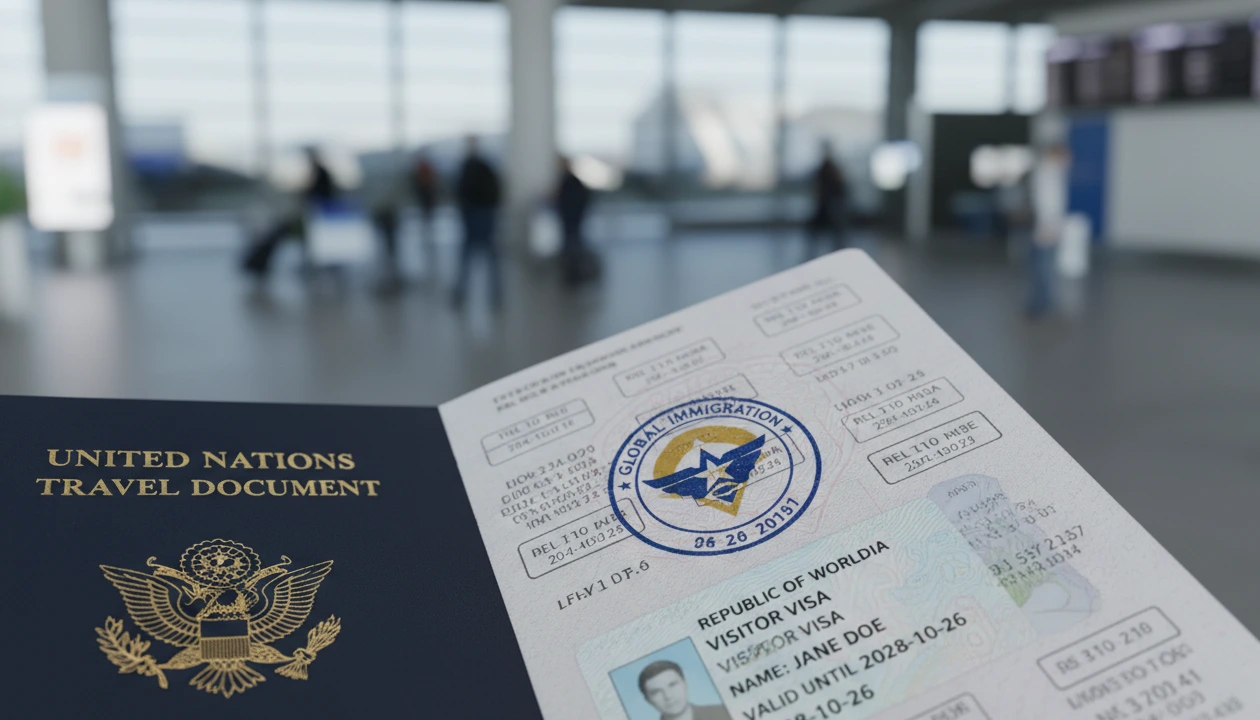
It is not just about getting a visa sticker. The way you enter Thailand decides how closely your ticket is checked and how safe it is to rely on a dummy booking.
Let us walk through the main paths Indians use to get into Thailand and see where a dummy ticket fits comfortably and where you should think twice. Planning a group trip from India to Thailand? Book a dummy ticket for each traveler and keep everyone’s plans flexible. 👉 Order your dummy ticket today
TR Tourist Visa From India: Using A Dummy Ticket Calmly
For many Indian travelers, the classic route is simple. You apply for a Thailand Tourist Visa (TR) at the embassy, consulate, or through VFS before your trip, then fly in with that visa already stamped or approved.
In this scenario, your dummy ticket does most of its work at the application stage. The visa officer is checking whether:
- Your entry and exit dates make sense for a holiday.
- Your ticket aligns with hotel bookings and travel insurance.
- Your stay length matches your financial strength and work situation in India.
If you are showing a 7 to 15-day trip, have hotel bookings in popular areas like Bangkok, Phuket, Pattaya, Krabi, or Chiang Mai, and your bank statements look decent, a dummy round trip usually does the job.
Where it becomes risky is when you push the limits. For example:
- A very long stay, close to the maximum allowed.
- A one-way ticket with no clear onward plan.
- Weak financials and an itinerary that looks ambitious.
In those cases, the dummy ticket will not be the main problem. It will just become one more reason for the officer to doubt the overall story. To mitigate this, always cross-reference your itinerary against the official Thai visa duration limits, which cap tourist stays at 60 days for most approvals.
Visa Exemption Windows: Why Your Return Flight Suddenly Matters
When Thailand offers visa exemption or visa-free entry for Indian passport holders, things feel lighter on the surface. You may not visit a consulate at all. You simply fly in and get stamped at the airport if you qualify under the current rules.
Here, the dummy ticket’s role shifts from the embassy to two places: the airline check-in desk in India and Thai immigration at the airport.
Since you are not carrying a pre-approved visa, your ticket becomes one of the few strong signals about your intention to leave on time. Airline staff know this. Immigration officers know this. So they care more about:
- A clear return or onward flight within the allowed stay.
- A realistic trip length for an Indian tourist with your profile.
- A route that fits your story, such as Mumbai to Bangkok to Phuket, then back.
A well-built dummy return ticket can still work, but it must look like something you would genuinely fly. If you show 3 months in Thailand under a scheme that allows 30 days, you are inviting questions. If you show a tight 8 to 12-day loop and your hotels and funds line up, your onward reservation is more likely to be accepted as normal. Note that visa exemption rules can fluctuate, so always verify the latest from official sources before finalizing your dummy ticket dates.
Visa On Arrival Counters: Can A Dummy Ticket Survive The Queue?
Visa on arrival feels convenient from the outside, but it is one of the highest-pressure scenarios for your ticket. You are applying for entry on the spot, in a crowded queue, with officers who have very little time per passenger.
For Indian citizens, whenever a visa on arrival has been available, proof of onward travel is a key requirement. Here is what usually matters:
- The ticket must show you leaving before the permitted stay ends.
- The airline and route should be plausible for your profile.
- Your funds, hotel bookings, and tickets must all support the same plan.
A dummy ticket can still pass here, but the margin of error is thinner. If the rest of your documents are strong and your itinerary is simple, you are usually fine. If you are cutting it close on everything, a fully paid or flexible ticket reduces stress, especially at busy airports like Bangkok, Phuket, and Don Mueang, where officers see a lot of borderline cases. Pro tip: Arrive early during peak hours to give yourself buffer time for any quick verifications.
Multi Country Southeast Asia Loops: Thailand In The Middle
Many Indian travelers do not treat Thailand as a standalone trip. You might land in Bangkok, hop to Vietnam or Singapore, then fly back to India from somewhere else.
In that case, your onward proof is not a return to India from Thailand. It is the next flight in your sequence. For example:
- Chennai to Bangkok
- Bangkok to Hanoi
- Singapore to Chennai
A dummy ticket can support this plan in two ways:
- As the India to Thailand leg, if you are still finalising dates.
- As Thailand, to the next country leg, to show you are leaving on time.
The important part is coherence. Your dummy ticket must match the story you tell on your visa form and at immigration. If you say you are only in Thailand for 5 days before heading to Malaysia, but your onward booking shows you still in Thailand after 20 days, that contradiction matters more than whether the ticket is dummy or paid. For multi-country trips, consider chaining multiple dummy bookings to maintain consistency across borders.
Picking The Right Ticket Strategy For Your Route
So, where does that leave you in practical terms as an Indian traveler planning Thailand?
For a straightforward TR visa with a normal length holiday, a dummy round-trip is usually enough to anchor your application. You can then switch to a real ticket after approval if you want better timings or fares.
For visa exemption or visa-free periods, you can still use a dummy ticket, but it becomes a frontline document for airline staff and immigration. Make it realistic, timed to the official stay limit, and consistent with your hotels and funds.
For a visa on arrival, especially if you feel your case is slightly sensitive, treat a fully paid or at least flexible return ticket as an investment in peace of mind. It is often cheaper than dealing with last-minute panic at the counter.
Finally, if you are building a multi-country loop, think of your tickets as a chain. Every link in India, Thailand, the next destination, and back to India should tell one clear story. A dummy ticket can be one of those links, as long as the full chain makes sense on paper and in person. Tailoring your strategy to your specific route can save hours of worry—start by mapping out your full itinerary on paper.
Who Actually Checks Your Ticket On The Way To Thailand?

Your dummy booking does not live in a vacuum.
Three different teams can look at it before you ever sip a coconut in Phuket.
If you understand how each team thinks, you can decide whether a dummy reservation is enough for your situation or whether a paid ticket is the safer bet. Avoid risking money on non-refundable fares and use a verified dummy ticket booking built specifically for visa files.
Stage One: Embassy Or VFS Looking At Your Paper Trail
When you apply for a Thailand visa from India, your onward ticket is judged first at the embassy or VFS counter.
For many indian nationals, the experience starts with filling an application form, paying the visa fee, and gathering all supporting documents into one neat file.
If you apply through the Royal Thai Embassy or a Consulate General, they mostly work on what they see on paper. That includes:
- Your flight itinerary.
- Your hotel bookings.
- Your bank statements and other required documents.
Here, your dummy ticket is simply one part of the overall visa application. Officers check whether the itinerary is realistic for tourism purposes and whether your stay lines up with your funds and job situation in India.
Some travelers now use options like Thailand e visa, where they upload details online instead of visiting a counter. In that case, the system and staff behind the Thai e-Visa website also rely on scanned copies of your air ticket and other requisite documents. For e visa applicants, a clear, logical route with sensible dates is often more important than whether the booking is paid in full.
Behind the scenes, the decision is still made under rules set by the Royal Thai Government and the Ministry of Foreign Affairs. They look at your visa category and visa type, and decide whether to approve visa issuance as a sticker visa or an electronic approval.
What your dummy ticket must do at this stage is simple. It must match:
- The validity of your passport.
- The stay period you mentioned in the destination Thailand visa section of your form.
- The overall story is to enter the Kingdom of Thailand for a short holiday.
If your visa is approved, you receive a visa number, clear visa validity, and a date by which the visa expires. Once that happens, the embassy usually stops caring about your dummy ticket. The next gatekeepers are at the airport. This stage often takes 3-5 business days for processing, so plan your dummy ticket submission accordingly to avoid last-minute rushes.
Stage Two: Airline Staff Guarding Your Boarding Pass
After your visa is sorted, your next check happens far from any Thai immigration office. It is at the check-in counter in India, where airline staff decide whether you can board.
Their job is practical. If you are denied entry later, the airline can be fined or forced to fly you back. So they have a reason to look more closely at your air ticket than the embassy ever did.
At this point, staff want to see:
- A valid passport or travel document.
- A Thailand visa or proof that you qualify under a current visa exemption scheme.
- An itinerary that shows you will not overstay your planned trip.
If you are connecting through another country, they may also worry about whether you need a transit visa for that stop. This is often more relevant when you route through hubs in the Middle East or Southeast Asia.
For airline staff, your booking does not need to scream “dummy.” It just needs to look like a normal reservation with believable dates, especially if you plan to travel Thailand for around 60 days or less on the permission your visa allows.
If something looks odd, they might ask questions or check the PNR in their system. That is where a well-constructed dummy booking is safer than a random PDF that cannot be verified. Airlines like Air India or IndiGo, common for India-Thailand routes, typically verify PNRs quickly, so opt for services that provide genuine codes.
Stage Three: Thai Immigration Deciding Your Entry
The final and most important check is at immigration checkpoints in Thailand. Here you meet Thai immigration officials in person, and they decide whether you can stay in Thailand for the period allowed on your visa.
This decision falls under the Thai immigration bureau and the wider immigration bureau that implements Thai law and other established laws. Officers here not only deal with tourists. Every day they see:
- People entering for long-term medical treatment or short-term medical treatment.
- Foreign students arriving on non-immigrant ED visas.
- Professionals coming to conduct business, perform official duties, or conduct scientific research.
- Family members of Thai nationals or those with a Thai family bringing documents like a marriage certificate.
Compared to those cases, your tourist entry is usually quick. Still, officers can ask to see:
- Your return or onward ticket.
- Your hotel bookings in places like Bangkok or southern Thailand.
- Proof of funds and sometimes health insurance, if that is part of the current policy.
They will check whether your ticket matches your visa requirements and the permission written in your passport. If you hold a multiple-entry visa, they want to see that each re-entry still respects the rules. If you have a single entry, they want to know you intend to leave before it finishes.
Your dummy ticket must answer one simple question in the officer’s mind. Does this person clearly plan to leave the country on time, according to Thai government rules for ordinary passports?
If your documents are clean, your story is consistent, and you are clearly there for tourism purposes, a realistic dummy itinerary usually passes. If the officer feels unsure, they can send you to a secondary immigration office inside the airport for more questions.
The key takeaway is this. Across all three stages, the focus is not on whether your ticket is dummy or paid. It is on whether your file, your answers, and your itinerary together look like someone who respects Thai law and plans a short, honest visit Thailand. Immigration lines move fast at Suvarnabhumi, but having digital backups of your dummy ticket on your phone can speed things up if needed.
How To Build A Dummy Ticket That Looks “Real Enough” For Thailand
By this point, you know that a dummy booking can work, but only if it looks like a normal trip. The difference between “no problem, please proceed” and “can you step aside for a moment” is often in the small details.
This is where you tighten things up so your dummy ticket quietly does its job in your Thailand plan. If your dates are not final yet, book a dummy ticket now and lock in a clean itinerary for your application.
Make Your Itinerary Look Like A Trip You Would Actually Take
Start with a simple test. If you showed your itinerary to a travel-savvy friend in India, would they say, “Yes, that checks out”?
A solid dummy ticket usually ticks these boxes:
- Common routes and airlines
Think Delhi to Bangkok, Mumbai to Phuket via Bangkok, Bengaluru to Krabi with one logical stop. Avoid weird multi-stop combinations that look like you clicked randomly. - Normal timings
Arrive and depart at reasonable hours. Flying into Bangkok at 2 am and out of Phuket at 3 am a week later is fine. Landing at 2 am and leaving the same night at 3 am after a “10-day trip” is not. - Believable trip length
For most Indian travelers, 5 to 15 days in Thailand looks like a typical holiday. Longer stays can still be fine, but they need stronger finances and a clearer story.
If everything about your dummy ticket matches how people actually travel, you are already in a safer zone. Popular carriers like Thai Airways or low-cost options like AirAsia add authenticity—mirror real schedules for best results.
Align Your Dummy Dates With Real Thai Rules
Your dummy ticket should respect two clocks at the same time.
First, your visa or entry scheme.
Second, the time you say you want to spend in Thailand.
For example:
- You apply for a standard tourist visa and mention a 10-day holiday. Your dummy ticket shows arrival on 10 March and departure on 20 March.
- You plan to use a visa exemption and expect 30 days on entry. Your dummy ticket shows you leaving well before that, not on day 30 at 23:55 with no buffer.
Where people often trip up is by mixing stories. They submit a form saying “7 days in Bangkok and Pattaya” and attach a dummy return that leaves after 18 days. That mismatch can bother an officer more than the fact that it is a reservation.
As a rule, build in a realistic buffer. If your plan is roughly 10 days, put 9 to 12 days in the ticket, not 3 weeks. This buffer also accounts for any minor delays in your actual travel plans.
Match Your Ticket With The Rest Of Your Paperwork
A dummy ticket never stands alone. It sits next to hotel bookings, bank statements, insurance, and any supporting letters. Everything should tell the same story.
Do a quick consistency check:
- The ticket says you land in Bangkok. Your first hotel booking should also be in or near Bangkok.
- The ticket shows you flying out of Phuket. At least one hotel booking should show you in Phuket towards the end.
- Ticket dates fall inside your insurance dates. Not the other way around.
If you are planning a multi-city trip, write down a simple timeline on a notepad before you book anything. That way, you avoid classic clashes like flying out of Phuket on a date where your only hotel booking is in Chiang Mai.
When the pieces line up, officers tend to scan and move on. When they clash, they start asking questions. Tools like Google Sheets can help visualize your timeline for foolproof alignment.
Plan For Changes Without Creating Suspicion
Most of us do not have perfectly fixed dates when we first apply. Leave approvals change, fares move, friends drop out. That is exactly why dummy tickets are popular in India.
The trick is to change plans in a way that still looks honest and controlled.
A practical approach:
- Use a dummy ticket that fits your best guess dates for the visa stage.
- Once the visa is approved and your leave is final, buy a real ticket that stays within your visa rules.
- Keep the real ticket tidy and consistent with your final hotel and insurance bookings for check-in and immigration.
If your final trip ends up a few days different from the original dummy itinerary, that is rarely an issue as long as you remain within your permitted stay and your story stays the same. It only becomes a problem when the change suggests a new purpose, like turning a 10-day holiday into a 55-day stay with no extra funds. Services offering unlimited changes, like those from DummyFlights.com, make this transition seamless.
When A Real Ticket Becomes The Smarter Investment
There are situations where we would quietly suggest you stop playing in the grey and just buy a proper ticket.
For example:
- You have been questioned or refused at immigration in the past.
- You are planning a very long stay near the limit of what your visa allows.
- You are combining Thailand with several other countries, and the route is quite complex.
- You are traveling with parents or children and want to avoid any drama at the counter.
In these cases, a flexible or semi-flexible fare can be worth the higher price. You get stronger proof of travel, better standing with airline staff, and smoother conversations if anyone decides to look closer at your itinerary. Compare fares on sites like Kayak to find deals that balance cost and flexibility.
Using Professional Help Without Overcommitting Your Money
Not everyone wants to manually create and manage flight reservations. Many travelers prefer to use a reliable service that understands visa-style bookings.
This is where a provider like DummyFlights.com can quietly make your life easier. You pay a small fee, about 15 dollars, which is roughly 1,300 rupees, and receive a real, verifiable booking with a PNR you can show to embassies, VFS centres, or airline staff. It is built for visa use, not random screenshots, and you get the flexibility to adjust dates if your plan shifts slightly before travel.
Even then, the same rules apply. You still need your dates, hotels, insurance, and purpose to line up. A neat resume supports a strong application. It does not fix a weak one. Professional services also ensure compliance with airline verification systems, adding an extra layer of reliability.
A Simple Checklist Before You Hit Print
Before you print or save your dummy ticket, run through this quick checklist like a final boarding call:
- Does the trip length look normal for your budget and profile in India?
- Do the arrival and departure cities match your hotel bookings and rough route?
- Are the dates comfortably inside your visa validity and stay allowance?
- Would this itinerary make sense if it were a fully paid air ticket?
If you can answer yes to those questions, your dummy booking is doing exactly what you need. It looks like a trip you would happily take, which is exactly what Thai officers, airline staff, and visa counters expect to see. Print in color for best clarity at counters.
So, Is A Dummy Ticket For Thailand Visa Accepted?
For most Indian travelers, a well-prepared dummy ticket works just fine for Thailand, whether you are applying for a tourist visa or using an entry scheme that needs proof of onward travel. Embassies, airlines, and immigration care far more about whether your plan is believable, your documents are consistent, and your stay fits the rules than about whether you paid full fare.
The safer approach is to treat dummy tickets as a smart planning tool, not a shortcut. Build realistic itineraries, match them with solid finances and bookings, and upgrade to a flexible paid ticket when your case is sensitive or complex. That balance keeps your trip both practical and low-stress. Secure your Thailand visa with a hassle-free dummy ticket booking in just a few minutes. In summary, while acceptance isn't explicitly stated in official guidelines, real-world success stories from thousands of Indian applicants confirm that a credible dummy ticket is a viable option when backed by a cohesive application.
What Travelers Are Saying
Why Travelers Trust DummyFlights.com
DummyFlights.com has been helping travelers since 2019, specializing exclusively in dummy ticket reservations for visa applications like Thailand's tourist visa. We've supported over 50,000 visa applicants with verifiable PNRs and instant PDF delivery, ensuring seamless submissions at embassies and VFS centers. Our 24/7 customer support team, based in India, provides real human assistance—no automated responses—while secure online payments protect your data. As a registered business focused on this niche, DummyFlights.com delivers expertise you can rely on for stress-free onward travel proof.
Frequently Asked Questions
What if my dummy ticket dates don't match my final travel plans?
Most services, including DummyFlights.com, allow unlimited date changes before your trip. Update to align with your confirmed itinerary while staying within visa limits.
Can I use a dummy ticket for Thailand visa on arrival?
Yes, but ensure it's verifiable with a PNR. Officers check quickly, so consistency with your funds and hotels is crucial for approval.
How soon can I get a dummy ticket after ordering?
Instant delivery—PDF and PNR arrive in minutes via email, ready for your application.
Is there a risk of rejection due to using a dummy ticket?
Risk is low if your overall application is strong. Thousands of Indians succeed annually; focus on realistic itineraries and solid supporting docs.
Does DummyFlights.com offer refunds if my visa is denied?
We provide reliable bookings, but visa outcomes depend on your full file. Check our FAQ for policy details.
About the Author
Visa Expert Team - With over 10 years of combined experience in travel documentation and visa assistance, our team at DummyFlights.com specializes in creating verifiable travel itineraries. We’ve helped thousands of travelers navigate visa processes across 50+ countries, ensuring compliance with embassy standards.
Trusted Sources
- U.S. Department of State - Visa Information
- Schengen Visa Information
- International Air Transport Association (IATA)
Important Disclaimer
While our dummy tickets with live PNRs are designed to meet common embassy requirements, acceptance is not guaranteed and varies by consulate or country. Always verify specific visa documentation rules with the relevant embassy or official government website before submission. DummyFlights.com is not liable for visa rejections or any legal issues arising from improper use of our services.


